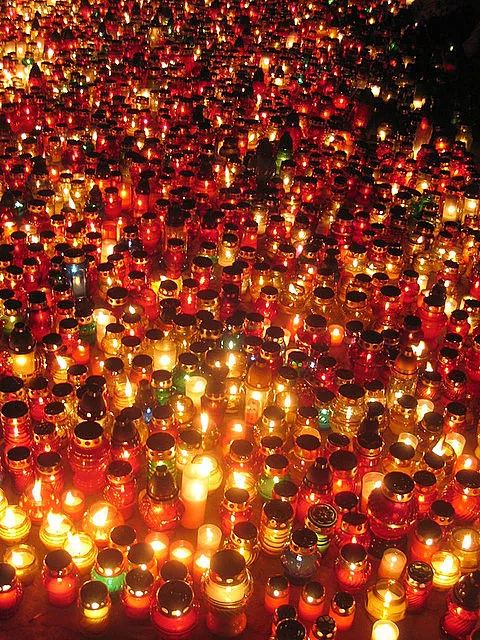All Saints’ Day, observed on November 1st, is a significant holiday celebrated notably in Poland and Lithuania, providing an opportunity to recognize and honor the deceased. As you learn about Polish culture or Lithuanian holidays, or if you visit Poland or Lithuania during All Saints’ and All Souls’ Days, it’s beneficial to understand the essence of this day. There are similarities in the way both countries observe this holiday, partially due to their shared history when Lithuania and Poland were united.
All Saints Observations
On this night, cemeteries are visited, and candles and flowers are placed on graves as the living offer prayers for the deceased. The holiday encourages honoring not only family members but also old and forgotten graves, as well as the tombs of strangers. At a national level, the graves of important figures and military tombs are honored.
Candles in colorful glass jars numbering in the thousands illuminate cemeteries on All Saints’ Day, transforming a day that might otherwise be viewed as somber into one filled with beauty and light. Moreover, it serves as an opportunity for families to bond and commemorate those they have lost. This occasion can also be a moment of healing; over the last century, both Poland and Lithuania experienced significant population reductions due to war, occupation, and deportation, leading to conversations about past losses that are often left unspoken. Mass is offered for those who wish to attend church and pray for the departed.
Families may gather for a meal, leaving an empty space at the table with a plate of food and a full glass as a way to honor those who have passed away.
Halloween and All Saints Day
Halloween is not traditionally celebrated in Poland or Lithuania as it is in the United States; however, All Saints’ Day recalls the ancient elements of the Halloween tradition that describe the intersection of the living and the dead. This day is followed by All Souls’ Day (November 2nd), and it is believed that the evening between these two days is when the deceased return to visit the living. In Lithuania, this day is referred to as Vėlinės, with its roots steeped in pagan traditions, where feasts and ceremonies were dedicated to remembering ancestors.
Historically, after visiting graves, families would return home to share a meal consisting of seven dishes meant to be “shared” with the visiting souls of the deceased—windows and doors were left open to facilitate their arrival and departure.
Various superstitions have traditionally surrounded this day; for instance, bad weather is thought to signify a year of death, and there exists a belief that churches are filled with the souls of the departed on this particular day.





